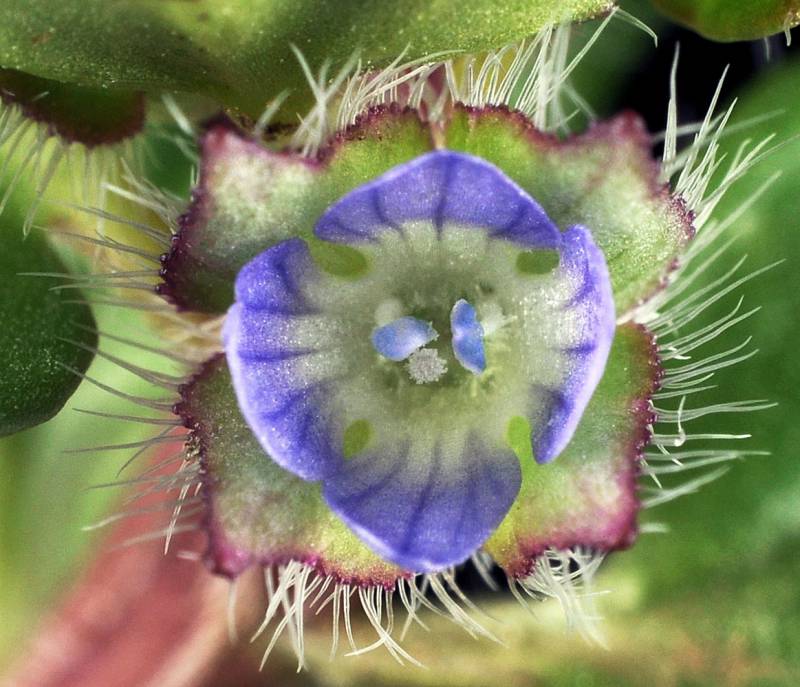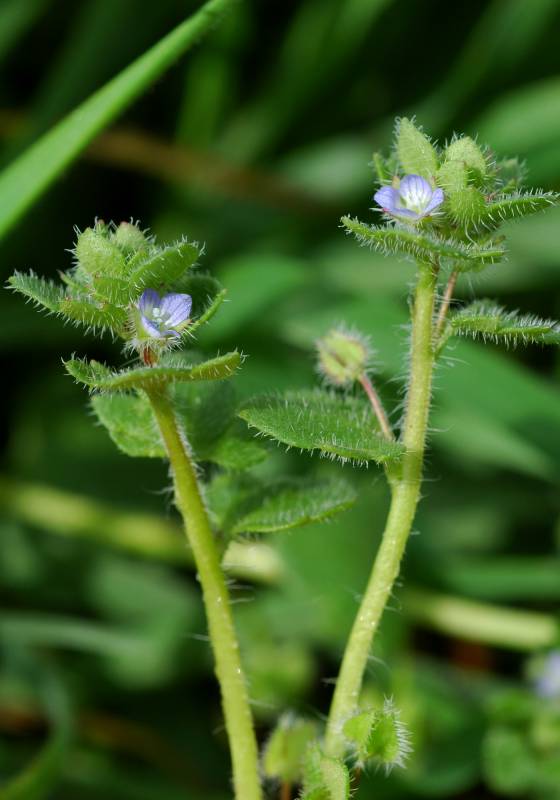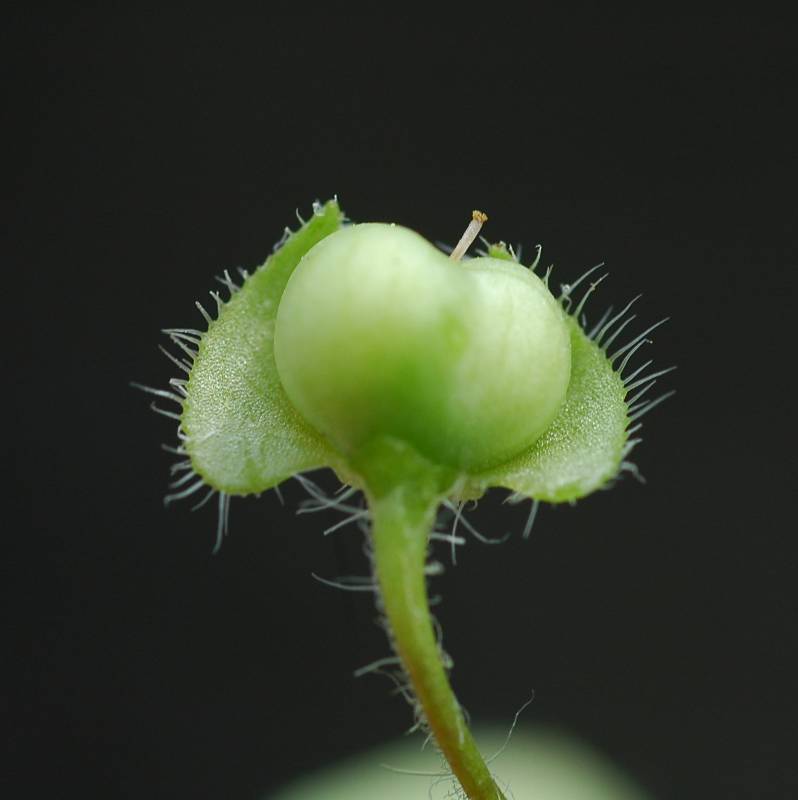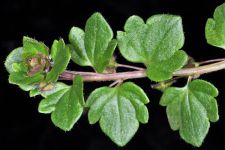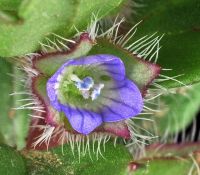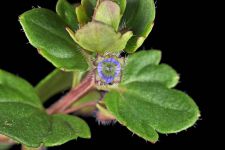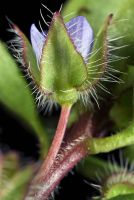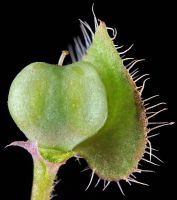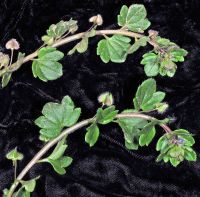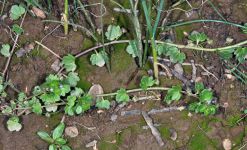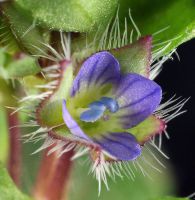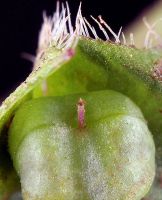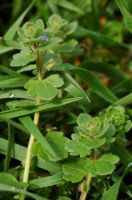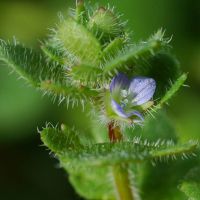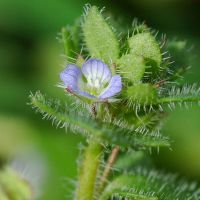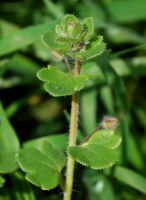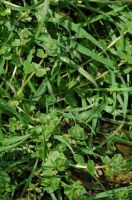Distribution: Occurring in scattered locations on both sides of the Cascades crest in Washington; British Columbia to Oregon, east to Idaho and Utah; other scattered locations in central and eastern North America.
Habitat: Waste places, disturbed soil.
Flowers: April-June
Origin: Introduced from Europe
Growth Duration: Annual
Conservation Status: Not of concern
Pollination: Bees, flies
Taprooted annual, the stem branched at the base and prostrate or ascending, 0.5-4 dm. long; herbage with some spreading, stiff hairs.
Leaves 0.5-2 cm. wide, wider than long, palmately veined and lobed, usually with 3-5 lobes, with a petiole no longer than the blade; lowest leaves opposite; leaves from the lowest flower upward all alternate and fully developed.
Flowers borne singly and remotely in the axils of the alternate leaves on petioles up to 1.5 cm. long, along the elongate stem; sepals 4, becoming 5-7 mm. long and deltoid-ovate with marginal hairs in fruit; corolla pale blue, rotate, 3 mm. wide, 4-lobed; style 0.6-1 mm. long; stamens 2.
Capsule 2.5-3.5 mm. high, broader than high, slightly notched.
Publication: Sp. Pl. 1: 13-14. 1753.
PNW Herbaria: Specimen records of Veronica hederifolia in the Consortium of Pacific Northwest Herbaria database
WA Flora Checklist: Veronica hederifolia checklist entry
OregonFlora: Veronica hederifolia information
E-Flora BC: Veronica hederifolia atlas page
CalPhotos: Veronica hederifolia photos

